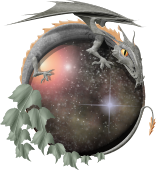- Cities and buildings
- Fields, plains and deserts
- Forests
- Hills and mountains
- Islands and promontories
- Lands, realms and regions
- Rivers and lakes
- Seas and oceans


 |
||||
|


Which personality type are you?
Take the Free mydiscprofile Personality Test to discover your core personality and your ideal job.   Which personality type are you? |
GhostsDiscarnate spiritsThe disembodied spirits, mainly - though not exclusively - of dead Men, especially those trapped by unusual circumstances rather than departing to follow their natural destiny. Ghosts are mentioned often in Tolkien's tales, but most commonly in a metaphorical or symbolic sense. For example, when Húrin returned from his confinement in Angband in the First Age, those who saw him imagined that he was a ghostly warrior returning from death (though in fact he was a living Man). At the very least this shows that the inhabitants of Middle-earth took the existence of ghosts as a simple fact. Where ghosts do actually appear, the circumstances are rarely straightforward. After Gorlim betrayed Beren's father Barahir, for instance, Beren dreamed that Gorlim's spirit came to him across a lake and confessed his treachery. Though this was a dream, it was a dream of a real event, so it must have had some kind of supernatural source, however nebulous. The strange lights of visions of the Dead Marshes also seem to be what would commonly be called 'ghosts', though in their case there is little reason to think that they were the actual spirits of those who had died in the Marshes. Rather, they seem to have been a ghostly memory or impression of the great slaughter that had taken place there. Not only Men, but even those of the order of the Ainur had a ghostly spirit that could be released. In her encounter with Sauron, Lúthien threatened to strip him of his bodily form and send him back to Morgoth as a ghost. Sauron apparently took this threat seriously, so we must assume that he could have been made a ghost (indeed, from a certain point of view, this is exactly what happened to him after the Downfall of Barad-dûr). The most definitive ghosts1 in Tolkien's work are those that dwelt in the Paths of the Dead beneath the Dwimorberg. Spirits of Men held in Middle-earth by the curse of Isildur, they were doomed to roam the White Mountains until the time came when they could fulfil the oath they had broken. When Aragorn released them in the War of the Ring, they faded away on the wind, finally able to follow their fate and take the journey to Mandos and beyond. Notes
See also...Black Master, Black Stone, Isildur, The Unhappy, War of the Last Alliance For acknowledgements and references, see the Disclaimer & Bibliography page. Original content © copyright Mark Fisher 2012. All rights reserved. For conditions of reuse, see the Site FAQ. Website services kindly sponsored by myDISCprofile, the free online personality test.Take the FREE myDISCprofile personality test to discover your core personality and your ideal job. |